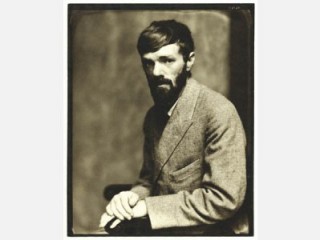

Pericles Lewis reads Gauguin’s nude native women as a symbol of “primitive nature, uncorrupted by masculine civilization.” To a certain extent, this gendering is rooted in ideas of the natural, related the eternal cycling of fertility and birth, as represented by female menstruation and pregnancy. It is important to note that the primitive is traditionally gendered female (and Other) in the Western mind. While Kandinsky was firmly committed to the separation of high (spiritual) art from decorative art, he saw art as democratically accessible as evidenced by the prolific production of spiritually imbued folk art, “primitive” art, and children’s art.

He later published Der Blaue Reiter Almanac (1912), which paired theories of art with examples of visual arts from prehistoric folk art through modernist painting. Kandinsky drew inspiration from an ethnographic trip to the Volgoda region of Russia in 1889 and his exposure to peasant art. Using Kandinsky’s theories of art, I argue that in The Rainbow, Lawrence removes primitivism and the essential and experiential world out of the realm of women and places these valued qualities under the purview of masculinity.īoth Kandinsky and Lawrence were primitivists that is to say, “they looked back to a pagan world, in touch with earth processes for rejuvenation”.


One year prior to the publication of The Rainbow, Wyndham Lewis published portions of the Russian painter Wassily Kandinsky’s Concerning the Spiritual in Art in the Vorticist journal Blast. The Rainbow, published in 1915, tells the story of three generations of the Brangwen family, focusing particularly on the erotic lives of its three female protagonists and their strivings against the gendered social conventions of their times. Primitivism and the Gender of the Media in The Rainbow by Natalie Prizel The Verbal, The Visual, and the Gender of Primitivismīorn in 1885 in Nottinghamshire, England to a coal miner and a teacher, David Herbert Lawrence rose to become an important figure in the modernist literary movement. The Rainbow became Lawrence’s focus and was censored a month after publication. Eventually, he jettisoned these two narratives-one after writing over two hundred pages-because he felt that they were too overtly sexual. At first, he worked on two other novels simultaneously while traveling with his new wife, Frieda-a woman six years his senior. Lawrence drafted The Rainbow, originally titled “The Sisters,” from March 1913 to September 1915.


 0 kommentar(er)
0 kommentar(er)
